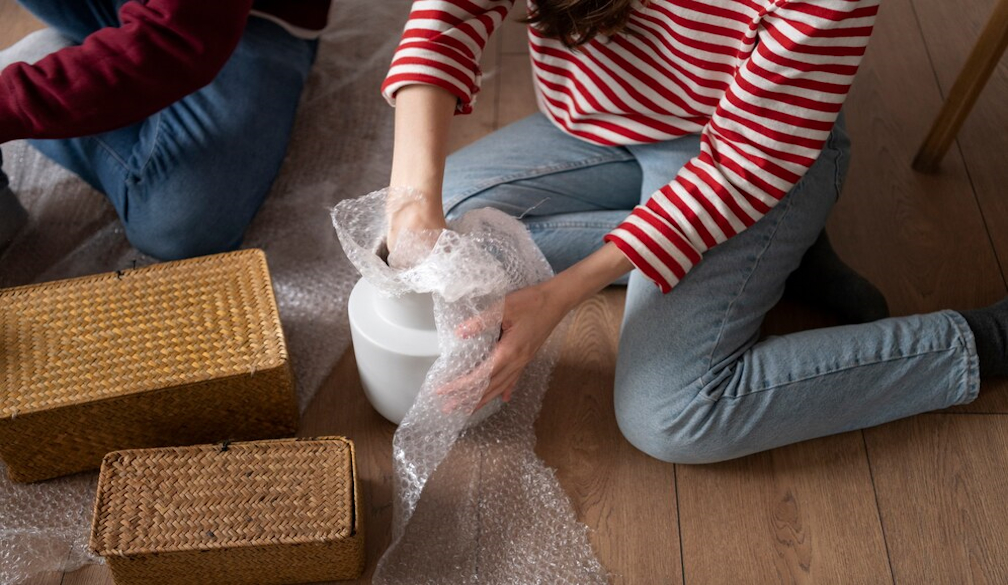The Versatile Uses of Bubble Wrap: Beyond Just Packaging

Bubble wrap is universally recognised as a staple in the packaging industry, providing a lightweight and effective solution for protecting fragile items during shipping. However, its versatility extends far beyond the realm of packaging. From creative arts and crafts to practical household applications, bubble wrap offers a myriad of uses that many people might not have considered. In this article, we will explore the diverse and innovative ways bubble wrap can be utilised beyond its traditional role in packaging.
- Arts and Crafts
Bubble wrap is a favourite among artists and crafters for its unique texture and flexibility. Here are some creative ways to use bubble wrap in arts and crafts:
- Painting Tool: Bubble wrap can be used to create interesting textures in paintings. Simply dip a piece of bubble wrap in paint and press it onto a canvas to produce a distinctive, dotted pattern.
- Stamping: Cut bubble wrap into different shapes and use them as stamps. Dip them in paint or ink and press them onto paper or fabric to create fun and whimsical designs.
- Mould Making: For those working with clay or plaster, bubble wrap can be used to create moulds with unique patterns and textures.
- Gardening
Gardeners have discovered several practical uses for bubble wrap that can help improve plant care and garden maintenance:
- Greenhouse Insulation: Line the inside of your greenhouse with bubble wrap to provide extra insulation. This helps maintain a stable temperature and protects plants from extreme cold.
- Frost Protection: Wrap bubble wrap around the base of delicate plants to protect them from frost. This is especially useful for young plants and seedlings.
- Seed Starting: Use bubble wrap to create a mini greenhouse effect for starting seeds. Lay a sheet of bubble wrap over seed trays to help retain moisture and warmth, promoting faster germination.
- Home Improvement
Bubble wrap can be a handy tool in various home improvement projects, offering both practical and cost-effective solutions:
- Window Insulation: During the colder months, you can use bubble wrap to insulate windows. Simply spray water on the window and press a sheet of bubble wrap against it. This temporary measure helps reduce heat loss and can lower energy bills.
- Cushioning for Moving: When moving house, bubble wrap can protect not only fragile items but also furniture corners and edges from damage.
- Draft Prevention: Place bubble wrap under doors or around window frames to prevent drafts and improve energy efficiency.
- Everyday Practical Uses
Bubble wrap can be surprisingly useful in day-to-day life, offering simple solutions to common problems:
- Protecting Delicate Items: Use bubble wrap to line drawers or shelves where you store delicate items such as glassware, ceramics, or electronics.
- Travel Protection: Wrap bubble wrap around bottles, cosmetics, or other breakable items when packing for travel to prevent damage.
- Soundproofing: While not a long-term solution, bubble wrap can be used to dampen sound. Line walls or floors with bubble wrap to reduce noise transmission temporarily.
- Health and Wellness
Believe it or not, bubble wrap can even contribute to your health and wellness routine:
- Stress Relief: Popping bubble wrap is a well-known stress reliever. The tactile sensation and repetitive action can help reduce anxiety and provide a simple way to relax.
- Exercise Aid: Incorporate bubble wrap into your exercise routine. Use it as a cushioned surface for floor exercises or to add resistance to strength training workouts.
- Educational Tools
Educators and parents can utilise bubble wrap in a variety of fun and educational activities for children:
- Sensory Play: Bubble wrap provides a unique tactile experience for children, making it an excellent tool for sensory play. Kids can explore different textures and sounds by touching and popping the bubbles.
- Learning Games: Use bubble wrap to create educational games. Write letters, numbers, or shapes on the bubbles and have children pop the correct ones as part of a learning activity.
- Science Experiments: Conduct simple science experiments using bubble wrap, such as exploring the concept of air pressure and buoyancy.
Conclusion
While bubble wrap is undoubtedly an essential material for packaging and protecting items during shipping, its uses extend far beyond this traditional role. From arts and crafts to practical home improvement solutions, bubble wrap proves to be a versatile and valuable tool in many aspects of daily life. Whether you’re an artist, gardener, homeowner, or educator, bubble wrap offers countless creative and practical applications. So, the next time you receive a package, don’t discard the bubble wrap—consider how it might be repurposed in innovative and useful ways.
